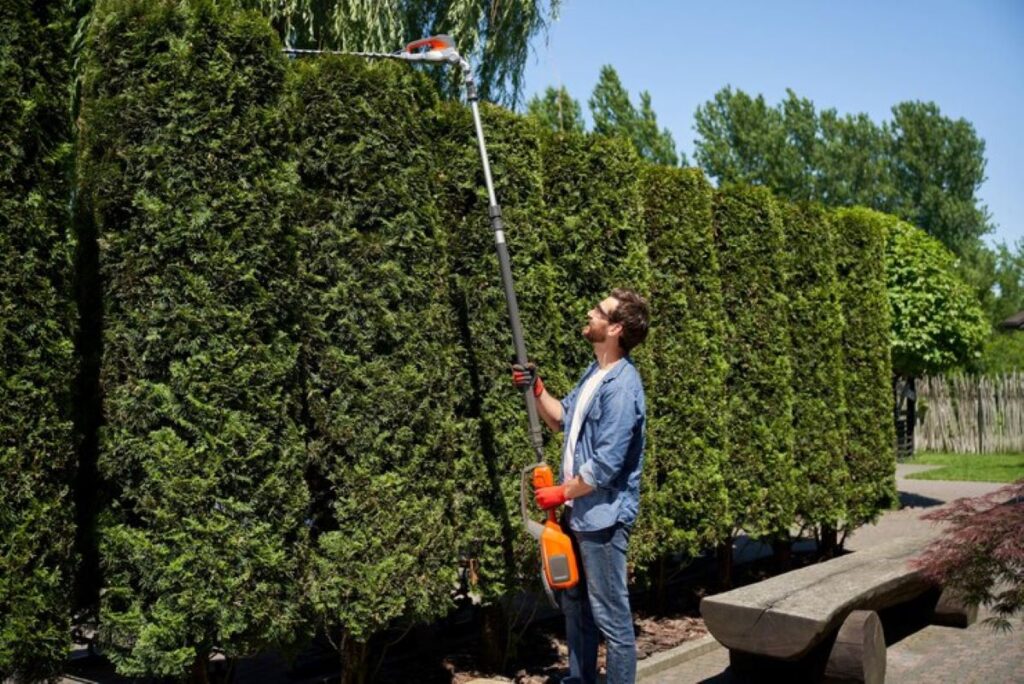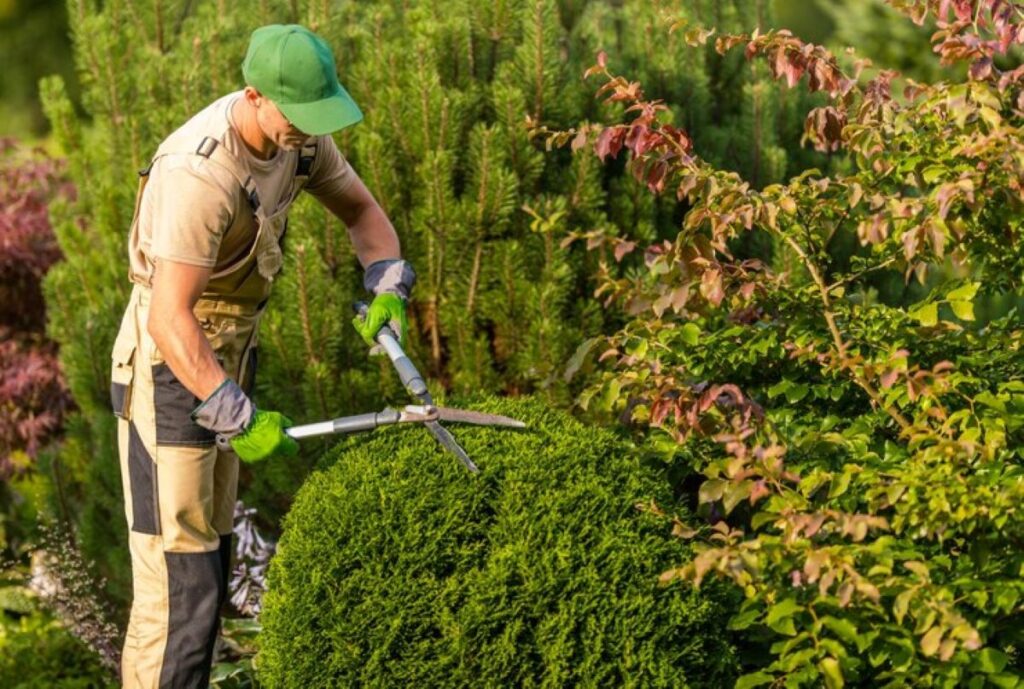What is Hedge Shaping and Why is Professional Technique Important?
Hedge shaping is the deliberate cutting and trimming of hedges to maintain their form, density, and health whilst creating clean, attractive boundaries in gardens and landscapes. This practice goes beyond simple maintenance—it directly influences plant vigour, longevity, and visual appeal.
Professional technique matters because poorly executed cuts can damage plant tissue, create weak growth patterns, and leave hedges vulnerable to disease. Professionals employ specialized tools and precise methods that ensure cuts heal quickly whilst promoting dense, healthy foliage. Their approach considers factors like light penetration, air circulation, and seasonal growth patterns—elements that distinguish thriving hedges from struggling ones. The importance of proper hedge shaping becomes evident when comparing professionally maintained hedges with those cut haphazardly: the former display uniform growth, robust health, and enduring beauty.
What Tools Do Professionals Use for Hedge Shaping?
Professional hedge trimming tools range from basic hand tools to advanced powered equipment. Manual shears and secateurs are used for precise work on small hedges or intricate sections, while powered hedge trimmers are used for larger areas efficiently. Professionals choose tools based on the size, density, and desired finish of the hedge.
The toolkit usually consists of:
- Hand shears for fine detail work
- Long-reach hedge trimmers for tall hedges
- Petrol or electric trimmers for extensive cutting
- Pruning saws for thick branches
- Loppers for medium-sized stems
Safety equipment is essential during operation. Protective goggles shield eyes from flying debris, while heavy-duty gloves prevent cuts and blisters. Ear defenders protect hearing when operating powered equipment for long periods.
Tool maintenance directly affects cutting efficiency. For instance, sharp blades slice cleanly through stems without tearing plant tissue, which reduces the risk of disease. Regular cleaning removes sap buildup that dulls cutting edges. Proper storage prevents rust and damage, extending the lifespan of tools while ensuring consistent performance across multiple trimming sessions.
How Do Professionals Prepare for Hedge Shaping?
Proper hedge preparation begins with a thorough inspection of the hedge and surrounding area. Professionals check for bird nests, particularly during breeding season, and scan for hidden obstacles like wires or debris that could damage equipment or cause injury.
The preparation checklist includes:
- Clearing the work area – removing garden furniture, toys, and other objects from around the hedge
- Tool inspection – verifying that blades are sharp and equipment functions correctly
- Safety gear – donning protective eyewear, gloves, ear protection, and sturdy footwear
- Laying protective tarps – positioning sheets beneath the hedge to catch clippings for easy cleanup
Sharp tools prove essential for clean cuts that heal quickly and reduce disease risk. Dull blades tear plant tissue, creating ragged wounds that invite infection and stress the hedge. Professionals sharpen their equipment before each session, understanding that blade condition directly impacts both cutting efficiency and plant health. Safety gear protects against flying debris, loud machinery noise, and accidental contact with sharp implements during extended trimming sessions.
What Is the String Line Method and How Does It Help in Hedge Shaping?
The string line method transforms uneven hedges into precisely shaped boundaries by using stakes and taut string as physical guides. Professionals position stakes at each end of the hedge section and stretch string between them at the desired height and angle, creating a visual reference line that ensures consistent cutting depth across the entire length.
This technique delivers straight edges that would be nearly impossible to achieve by eye alone. The guide lines in hedge trimming act as a ruler, allowing professionals to maintain uniform dimensions from start to finish. When shaping the sides, stakes are placed vertically with string marking the outer cutting plane. For the top surface, horizontal string lines establish the exact height across the hedge’s length.
The method’s popularity stems from its simplicity and effectiveness. A single string line eliminates guesswork, preventing the common problem of wavy or uneven surfaces that occur when trimmers rely solely on visual estimation. The physical guide keeps blades at the correct distance from the hedge centre, producing clean shapes that enhance both the hedge’s appearance and structural integrity.

Why Do Professionals Use Tapering Techniques When Cutting Hedges?
Does a hedge need to be wider at the bottom than the top? Tapering hedges with inward-angled cuts ensures sunlight reaches all parts of the plant, preventing bare patches at the base. This technique creates a hedge that’s approximately 15-20cm narrower at the top than at ground level, allowing light to penetrate the lower branches and promoting dense, healthy growth throughout.
Professional gardeners establish this precise angle by positioning stakes at both ends of the hedge and running string lines at the desired inward slope. They secure one string line at the base and another at the top, creating a visible guide that slopes inward by roughly 10-15 degrees from vertical.
The trimming process follows this angled guide upward, with professionals making smooth, continuous cuts that mirror the string line’s trajectory. This method prevents the common problem of top-heavy hedges where upper branches shade out lower growth, leading to woody, sparse bases that detract from the hedge’s appearance and structural integrity.
How Is Layered Cutting Applied to Thick Hedges?
What steps do professionals follow when tackling overgrown or dense hedges? The layered cutting technique involves removing foliage in stages rather than attempting to cut through to the desired depth in one pass, preventing damage to both the hedge and equipment.
Step 1: Trim the Outer Layer
Professionals begin by trimming the outermost layer of growth, removing approximately 10-15 centimetres of foliage. This initial pass creates a manageable surface and allows better visibility of the hedge’s structure. After clearing away these clippings, they assess the remaining growth and identify any dead wood or problem areas.
Step 2: Cut Deeper
The second layer follows the same pattern, cutting another 10-15 centimetres deeper whilst maintaining the desired taper angle. This methodical approach continues until reaching the target shape and size.
Step 3: Pause and Check
Between each layer, professionals pause to:
- Clear accumulated clippings from the work area
- Check blade sharpness and equipment performance
- Verify alignment with guide strings
- Inspect for hidden obstacles or wildlife
This systematic method prevents strain on trimmer blades and ensures clean cuts throughout the hedge’s depth, promoting healthier regrowth.
What Are the Specialized Techniques Used for Different Hedge Types?
Do all hedges receive the same treatment? Professionals adjust their approach based on whether they’re working with formal, informal, or evergreen conifer hedges. Each type demands distinct timing and intensity of cuts.
Formal hedges care involves precise trimming twice annually—typically in late spring and late summer—to maintain crisp geometric shapes. These structured plantings like box or yew require meticulous attention to straight lines and uniform surfaces.
Informal hedges maintenance takes a lighter approach with just one annual cut, usually after flowering. Species such as hawthorn or beech benefit from this relaxed schedule, which preserves their natural flowing appearance whilst controlling size.
Evergreen conifers like Leyland cypress need frequent light trimming throughout the growing season. Professionals remove small amounts regularly rather than heavy cuts, as these species struggle to regenerate from old wood. This prevents bare patches and maintains dense foliage coverage.
What Common Mistakes Do Professionals Avoid in Hedge Shaping?
Professionals avoid hedge shaping mistakes that can harm both the health and appearance of plants. One of the most damaging mistakes is getting the timing wrong—cutting when the plants are actively growing or too late in the season can make hedges susceptible to frost damage and disease.
Dull or poorly maintained tools lead to uneven cuts that invite infection and slow down the healing process. Experienced trimmers make it a point to regularly sharpen their blades and check their equipment before each session.
Creating perfectly vertical sides without any taper prevents sunlight from reaching lower branches, resulting in bare patches at the base. Professionals always make sure to angle their cuts slightly inward to maintain density throughout the entire height of the hedge.
Removing too much growth in one go shocks the plant and weakens its structure. Trained specialists know to limit their cuts to no more than one-third of the total growth, especially on established hedges. For detailed guidance on this, they often refer to expert resources on pruning trees and shrubs.
If the base of the hedge is neglected during trimming sessions, debris can build up inside, creating an environment for fungal growth and pest infestations. To prevent these problems from occurring, thorough clearing after each cut is essential.
What Aftercare Practices Do Professionals Recommend Post-Shaping?
Professionals recommend thorough watering immediately after trimming to help hedges recover from the stress of cutting. Deep watering encourages root development and supports new growth where cuts were made.
Post-trimming care extends beyond hydration. Professionals suggest these essential practices:
- Spring fertilisation: Apply balanced fertiliser to provide nutrients that support vigorous regrowth
- Mulching: Spread a 5-8cm layer of organic mulch around the hedge base to suppress weeds and retain soil moisture
- Debris removal: Clear all clippings from within the hedge structure to prevent fungal diseases and pest infestations
The timing of these interventions matters. Water within hours of cutting, whilst fertiliser application works best when scheduled for early spring before the main growing season begins. Mulch replenishment should occur annually, preferably after fertilising to lock in nutrients and moisture.
Professionals also inspect the hedge base during post-trimming care, checking for signs of disease or pest damage that may have been hidden before shaping. This proactive approach prevents minor issues from becoming major problems.

How Do Professional Services Provide Comprehensive Hedge Maintenance?
What services extend beyond basic trimming? Professional hedge services deliver complete maintenance packages that address every aspect of hedge health and appearance throughout the year. These companies employ trained specialists who understand the unique requirements of different hedge species and growth patterns.
Formative pruning represents a critical service that shapes young hedges correctly from the start. Professionals remove dead, diseased, or crossing branches to establish a strong framework. This early intervention prevents structural problems and creates the foundation for a dense, attractive hedge.
Customised maintenance schedules adapt to specific hedge types and seasonal needs:
- Formal hedges receive precise bi-annual trimming to maintain crisp lines
- Informal hedges benefit from annual shaping that preserves their natural character
- Evergreen conifers require light, frequent attention to prevent bare patches
Professional teams handle complete debris removal, ensuring clippings don’t smother grass or create breeding grounds for pests. Many services include soil testing and amendment recommendations to optimise growing conditions.
Ongoing monitoring allows professionals to identify pest infestations, diseases, or nutrient deficiencies before they compromise hedge health. Regular visits mean problems receive immediate attention rather than escalating into costly replacements. This proactive approach maintains hedge vitality whilst reducing long-term maintenance expenses for property owners.
See Also : Hedge Trimming Service: How Often Should You Trim for Healthy Growth?
Why Should You Choose Professional Tools and Techniques for Hedge Shaping?
Professional hedge shaping delivers results that amateur efforts rarely match. The combination of specialised equipment, proven techniques, and expert knowledge ensures your hedges remain healthy, dense, and beautifully shaped year after year.
Attempting to replicate professional methods without proper training often leads to uneven cuts, damaged plants, and safety risks. When you choose professional hedge shaping services, you’re investing in:
- Precision equipment maintained to manufacturer standards
- Expert technique developed through years of practical experience
- Time savings that free you for other garden priorities
- Long-term hedge health through correct cutting angles and timing
Your garden deserves the expertise that transforms ordinary hedges into striking landscape features. Contact a certified hedge maintenance professional today to discuss a tailored care plan for your property.
FAQs About Professional Hedge Shaping and Maintenance
Hedge shaping is the precise trimming of hedges to maintain form, health, and aesthetics. Professional techniques prevent plant damage, encourage dense growth, and reduce disease risk.
2. What tools do professionals use for hedge shaping?
Professionals use hand shears, secateurs, pruning saws, loppers, and powered hedge trimmers, along with safety gear like gloves, goggles, and ear protection.
3. How do professionals prepare for hedge trimming?
Preparation includes inspecting hedges and surroundings, clearing obstacles, checking tool sharpness, wearing protective gear, and setting up tarps to catch clippings.
4. What is the string line method and why is it used?
The string line method uses stakes and taut strings to guide precise cuts, ensuring straight, even edges and uniform hedge height.
5. Why do professionals taper hedges when trimming?
Tapering (narrower at the top) allows sunlight to reach lower branches, promoting dense growth and preventing bare patches at the hedge base.
6. What is layered cutting and when is it applied?
Layered cutting removes foliage in stages, preventing damage to dense or overgrown hedges while maintaining alignment with guide lines.
7. How do professionals adjust techniques for different hedge types?
Formal hedges are trimmed bi-annually for crisp shapes, informal hedges annually for flow, and evergreen conifers frequently with light cuts to maintain dense foliage.
8. What post-shaping care do professionals recommend?
Watering immediately after trimming, spring fertilisation, mulching, and clearing debris help hedges recover, support growth, and prevent pests or disease.
9. Why should homeowners choose professional hedge shaping services?
Professional services ensure healthy, dense, visually appealing hedges, save time, prevent mistakes, and maintain long-term plant health using expert tools and techniques.

